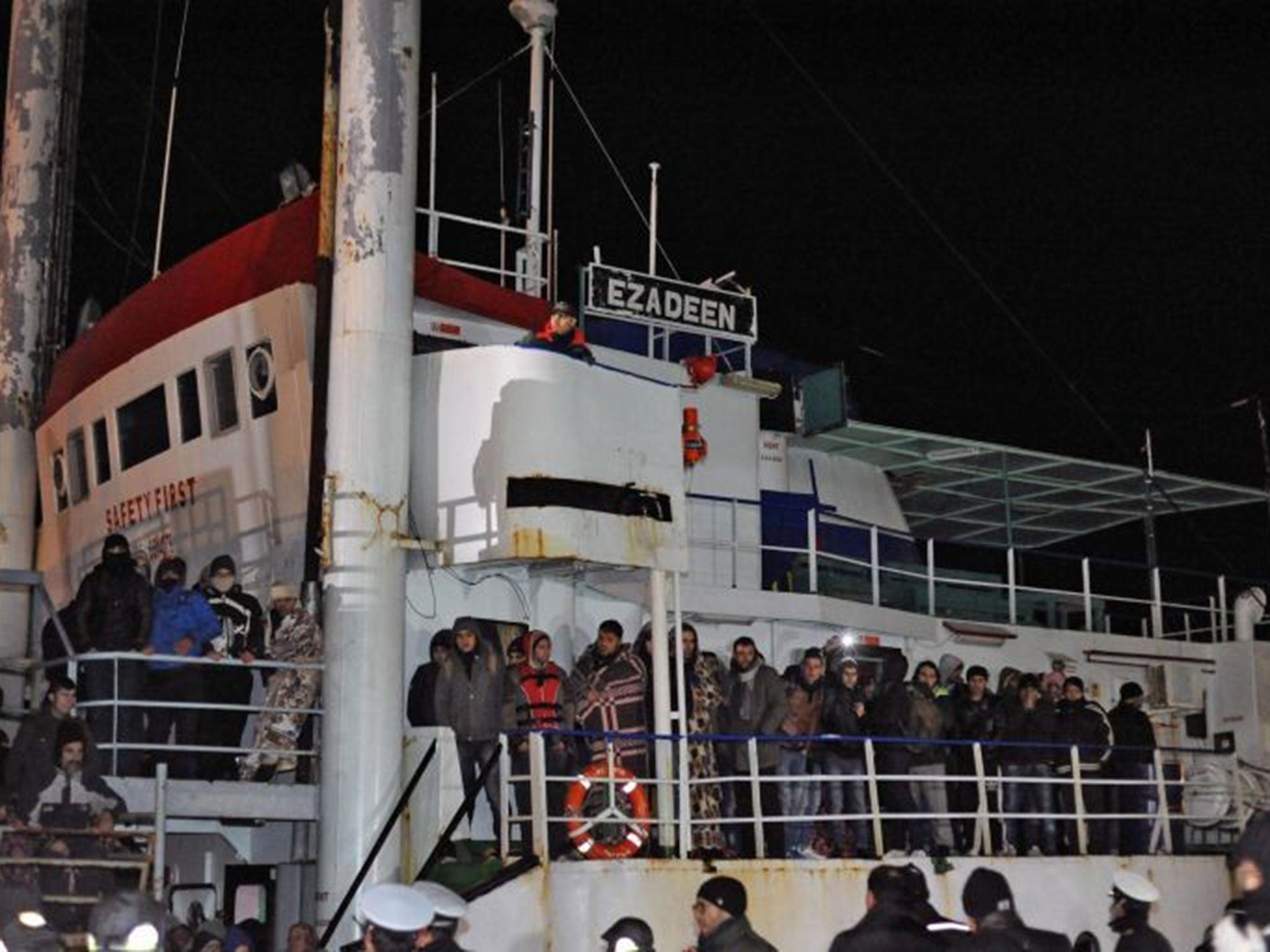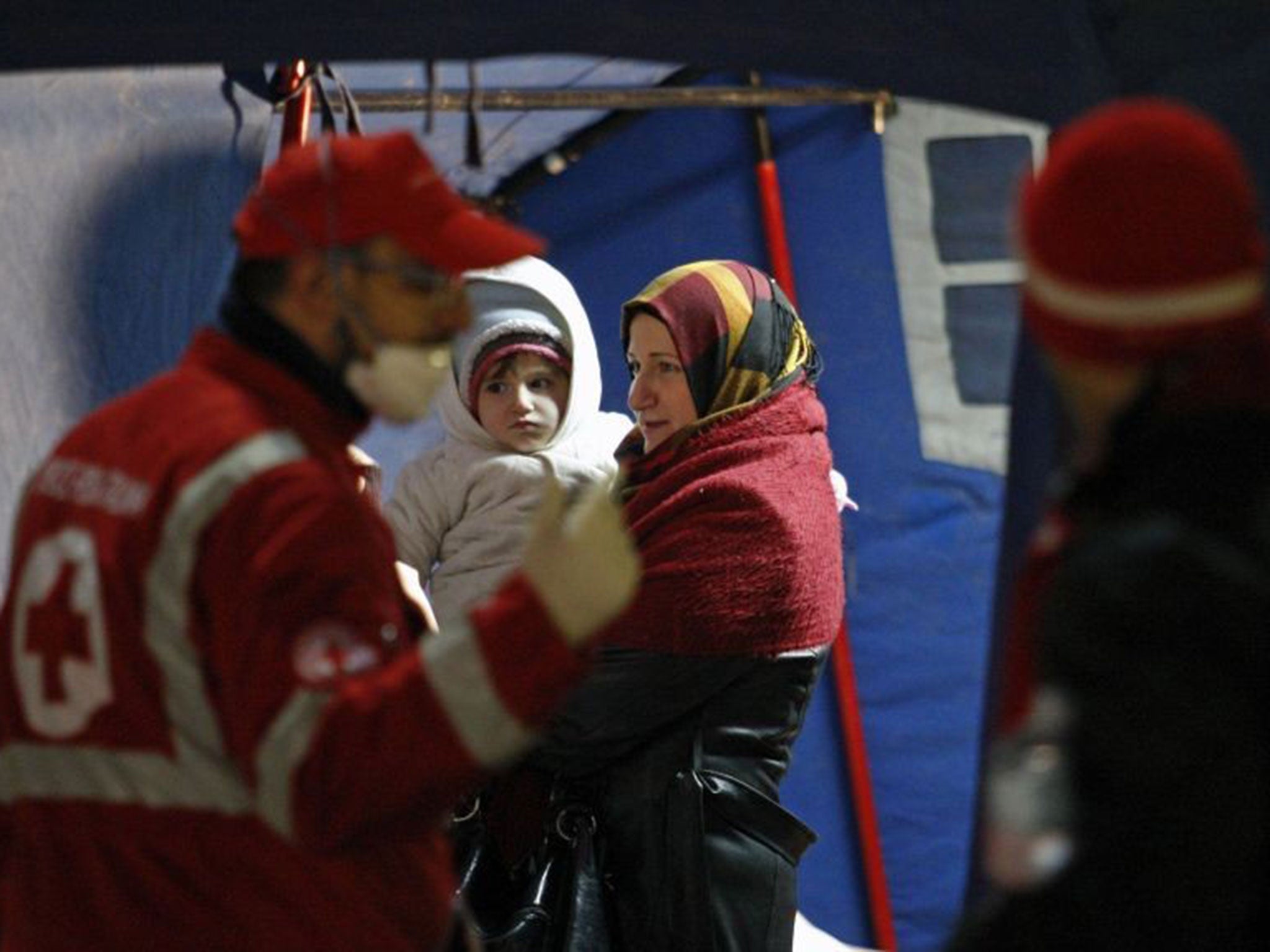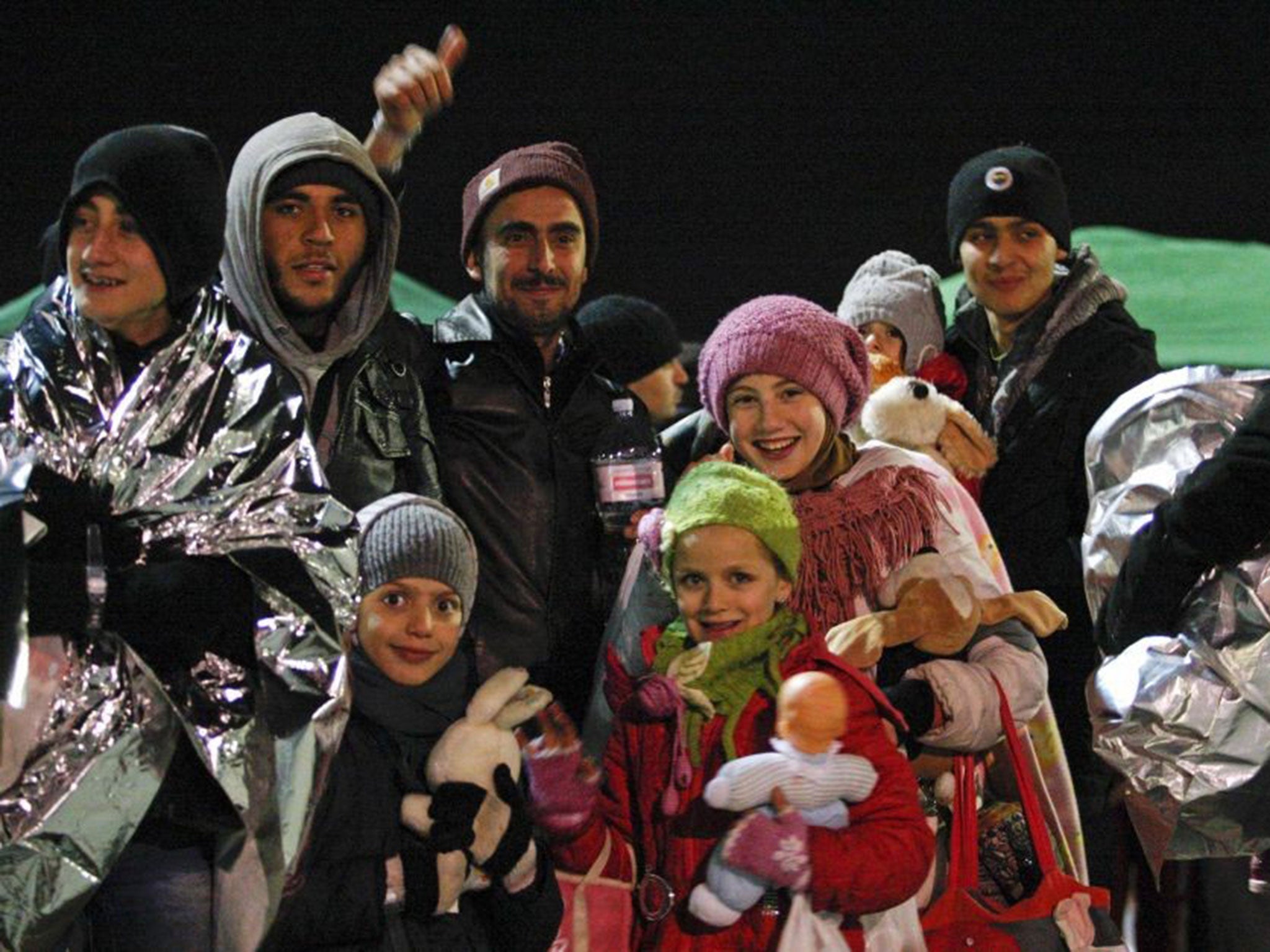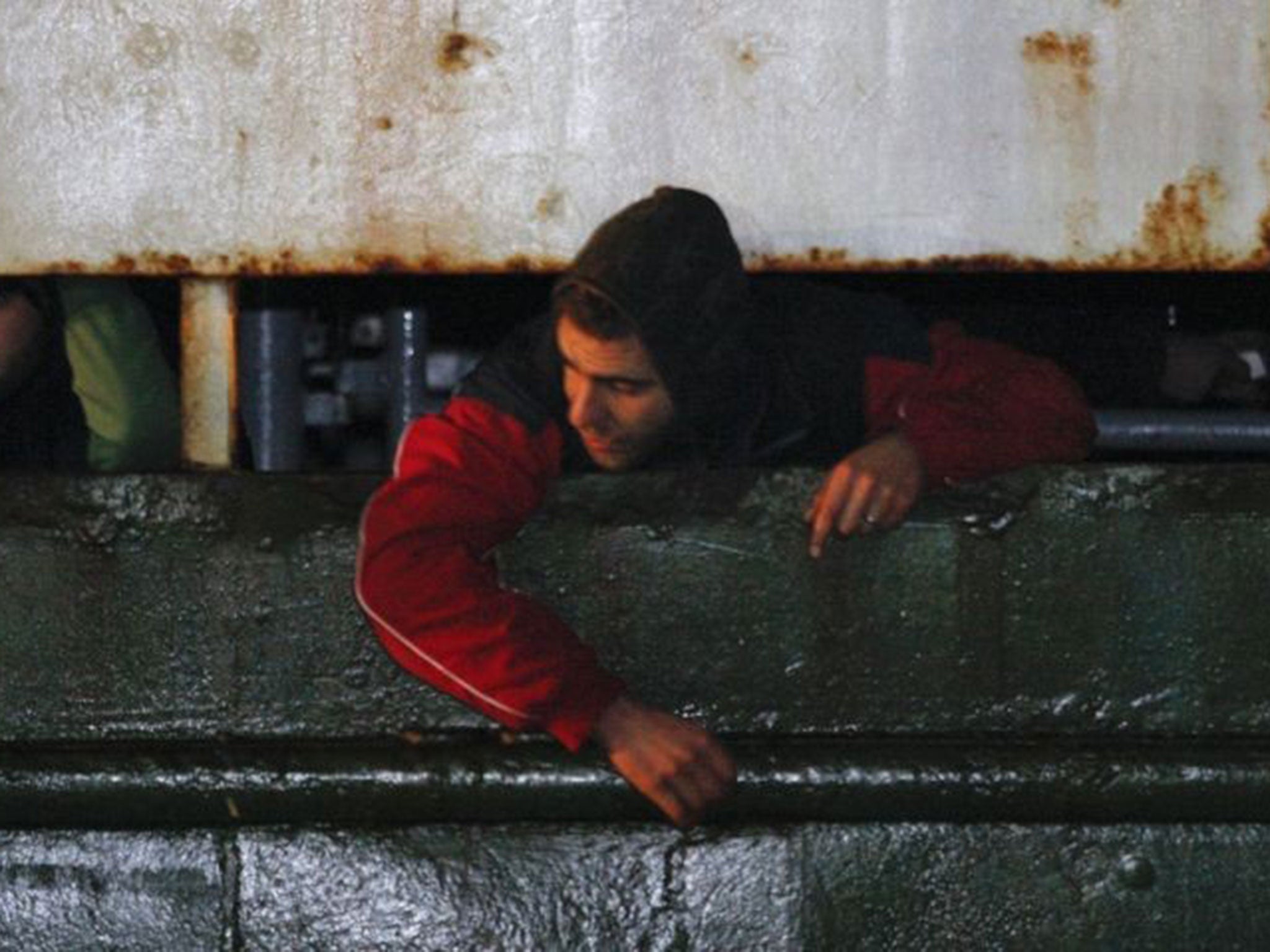Abandoned migrant 'ghost ship' arrives in Italy carrying hundreds of Syrian refugees
Migrants on board the Ezadeen were said to be in relatively good health after ordeal

A “ghost ship” carrying hundreds of Syrian refugees including pregnant women and children has been towed safely to Italy after being abandoned by its crew.
The Ezadeen was the second cargo ship within days to be left on course to crash into the Italian coast, pointing to a worrying new trend by human traffickers.
Italy’s coastguard said the ship arrived at the port of Corigliano Calabro shortly before 11pm local time on Friday, where passengers were met by medical staff from the Red Cross.
Commander Francesco Perrotti told the BBC all the migrants on board were from Syria and said they were being taken by bus to other parts of Italy.

The 360 passengers were in relatively good physical condition after their three-day ordeal, he said.
The rescue of the Ezadeen follows a similar operation to save almost 800 migrants aboard another abandoned ship, the Blue Sky M, on Wednesday.
Sailing under the flag of Sierra Leone, it had lost power in rough seas off the south-east coast of Italy after being set on auto-pilot on its way from Turkey.
One of the migrants raised the alarm using a radio on board, telling coastguards: “We're without crew, we're heading toward the Italian coast and we have no-one to steer.”

Ezadeen is registered as a livestock vessel but cattle would not be left to cross high seas in the winter with no crew.
The so-called “ghost ships” are a worrying new trend as human traffickers exploit desperate refugees bidding for a new life in Europe, endangering their lives in the expectation that European coastguard agencies will take them to shore.
The UN’s refugee agency, the UNHCR, warned that similar incidents had been happening for months but only came to global attention this week.

“We are seeing this new trend. It’s apparent there have been other such incidents – maybe four or five in the past two months,” said UNHCR spokesman William Spindler.
“But only when the Blue Sky M incident occurred this week, which involved nearly 1,000 people, did it capture everyone’s attention.”
Mr Spindler said it showed that human traffickers were changing tactics. “They’re using bigger boats and different routes to smuggle people.

“In the past they have come from Libya in dinghies and boats, but that route seems to have been closed by Frontex [the EU’s border agency].”
Admiral Giovanni Pettorino of the Italian Coast Guard said that by charging hundreds of desperate refugees thousands of dollars at a time, gangs in North Africa and the Middle East were still able to make big profits by writing off ageing ships in the process of smuggling human beings.
Last month the UNHCR described the Mediterranean crossing from the Middle East and Africa to Europe as “the most lethal route in the world” after a record 3,419 migrants lost their lives in 2014 crossing the sea.
Join our commenting forum
Join thought-provoking conversations, follow other Independent readers and see their replies
Comments
Bookmark popover
Removed from bookmarks